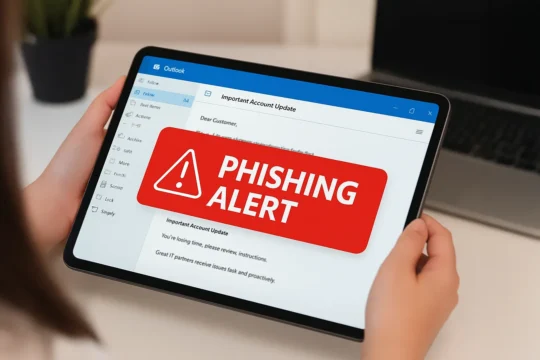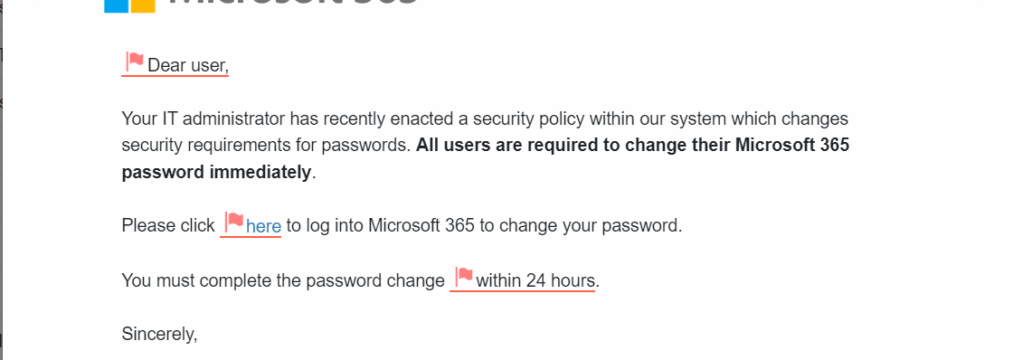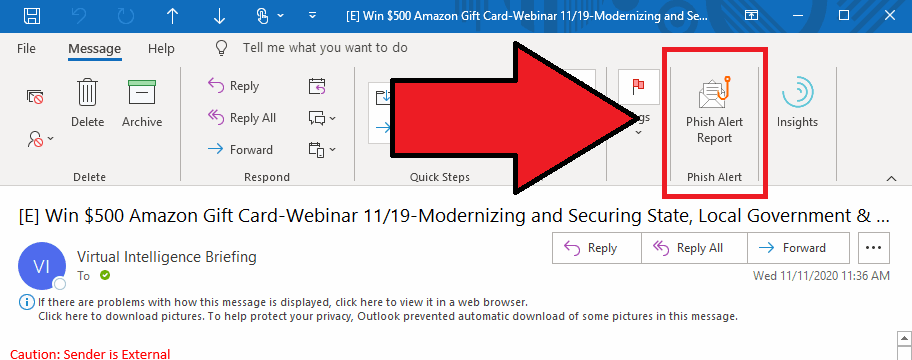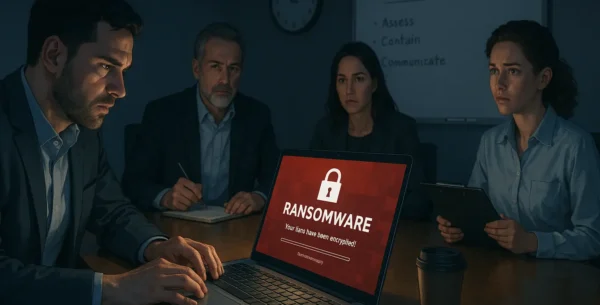How to Spot a Phishing Email in Under 30 Seconds

It only takes one click in a phishing email to put your entire business at risk.
Phishing remains the most common type of cyber attack — in fact, 84% of businesses and 83% of charities experienced phishing attempts in 2024, according to the UK Government Cyber Security Breaches Survey.
If you’re not sure how to spot a phishing email, you’re not alone. These attacks are designed to look convincing, especially when your team is busy or distracted. The good news? You can learn to spot one in under 30 seconds — once you know what to look for.
With phishing attempts now affecting the vast majority of UK organisations, it’s more important than ever to stay alert. Below are five quick checks you and your team can use to spot a phishing email in under 30 seconds.
What You’ll Learn
The 30-Second Rule: How to Spot a Phishing Email Fast
You don’t need to be technical to stay protected — just get into the habit of scanning these five things before you click anything.
1. The sender’s email address looks ‘off’
Phishing emails often come from addresses that look real at a glance, but aren’t.
Example:
[email protected] (note the extra “l”)
Instead of:
[email protected]
Check the domain after the “@”. If it doesn’t match the official site, it’s likely fake.

[image credit: hook security]
2. The message creates urgency or fear
Phishing relies on panic. Common tricks include:
- “Your account has been compromised!”
- “Payment overdue, click here to avoid a fine”
- “Log in now to avoid suspension”
Urgent language is a red flag. If it feels aggressive, stop and think before you act.

[image credit: knowb4]
3. There are unexpected attachments or links
If you weren’t expecting an invoice, PDF, or a password reset link — don’t open it.
Hover over any link (without clicking) to check the actual URL.
If it looks long, messy, or doesn’t match the sender’s site, it’s probably a trap.
4. It Feels Legit — But Something’s Off
Phishing emails used to be easy to spot because of poor grammar and clumsy formatting. But not anymore.
With the rise of AI-powered tools, cybercriminals can now create emails that are:
- Grammatically perfect
- Professionally branded
- Convincing in tone and structure
They’re no longer easy to spot — it’s the realism that makes them a real threat.
What to watch for instead:
- Generic or impersonal language like “Dear user”
- Unexpected context (e.g. an email that feels out of place in your current workflow)
- Slight mismatches in branding or sender tone
If something doesn’t feel quite right, trust your gut and verify before clicking.
5. They’re asking for sensitive info
No legitimate company will ask for:
- Your login password
- Bank account details
- Multi-factor Authentication (MFA) codes,
This is a major phishing red flag and a critical email security for business best practice.
Bonus Tip: Check the URL Without Clicking
Hover over any link (with your mouse or finger) to preview where it’s going.
Watch out for:
- Bit.ly or other short links (often used to mask malicious URLs)
- Domains with odd endings: .click, .xyz, or anything unrelated to the company
- Misspellings in the domain name
This simple trick can protect you from phishing without any technical skills.
What to Do If You’re Unsure
If something doesn’t feel right:
- Don’t click or reply — forward it to your IT provider or internal support team.
- Mark the email as phishing in Outlook, Gmail or your email platform.
- Encourage your team to ask questions. It’s better to be safe than sorry.
The image below shows an example of a ‘phish alert report’ button. This may look slightly different depending on your email platform (Outlook, Gmail etc.) or depending on your current set-up with an existing IT provider.

[image credit: the community solution education system]
Phishing email’s are one of the most common cyber threats in 2025, but it’s also one of the easiest to stop with the right awareness. If you’re a growing business or charity, it’s worth sharing this checklist with your team — especially those handling finance, HR, or operations. These departments are often prime targets for phishing emails.
Final Thoughts
Learning how to spot a phishing email is one of the easiest ways to protect your business against phishing attacks — and it takes less than 30 seconds once you know the signs.
At CYAN Solutions, we help our customers improve their email security for business by combining awareness training with enterprise-grade security tools, giving you peace of mind without slowing your team down.
We can help you take control.
If phishing emails are reaching your inbox regularly, we can help. From training your team to implementing business-grade email security, we’ll help you protect against phishing and reduce your risk.
Talk to CYAN Solutions about email security for business.
